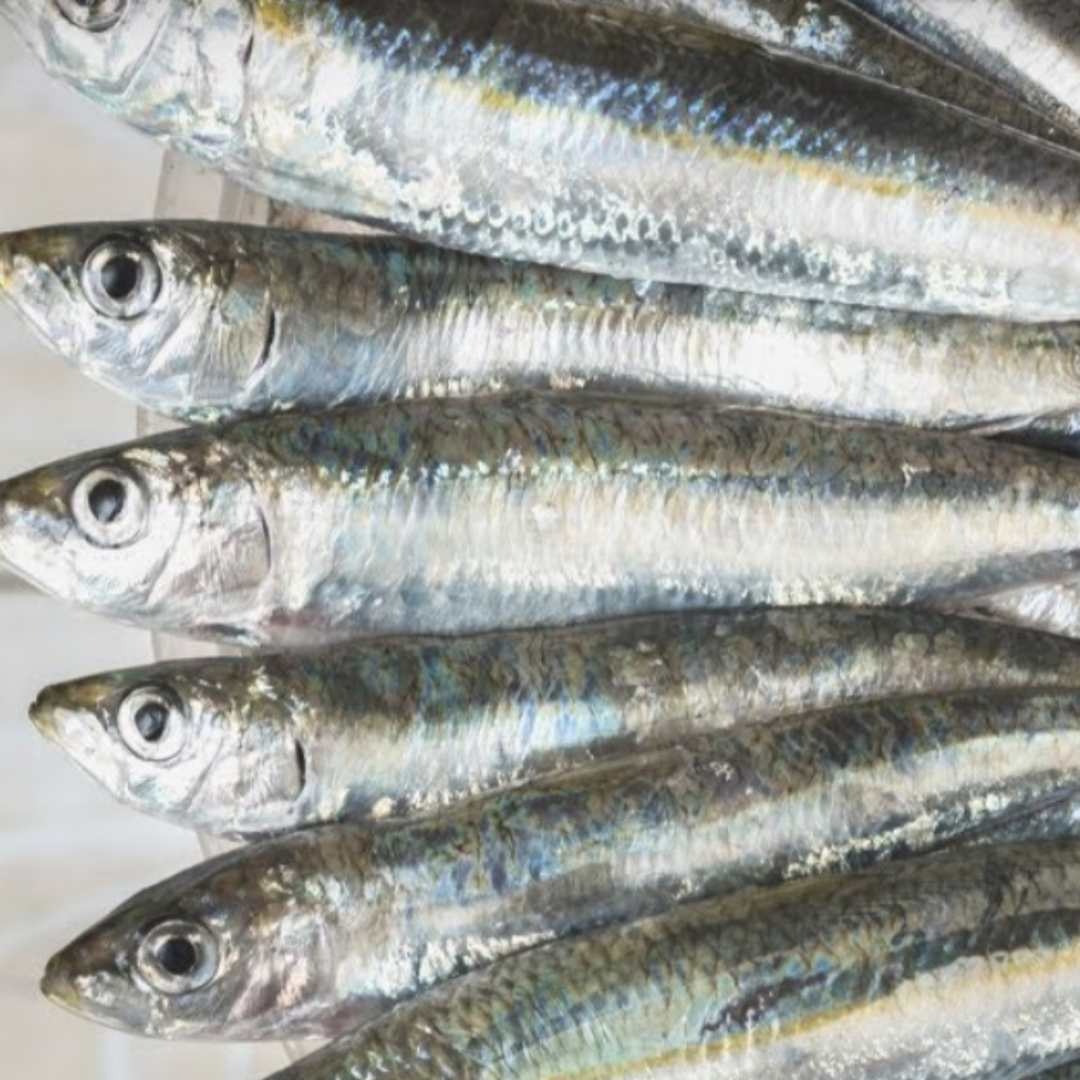Omega-3 and Omega-6 are the subject of much discussion for everyone trying to optimize health through nutrition - both for dogs and humans.
Many dog owners - especially pet parents like you making homemade dog food - ask me about the benefits of Omega-3 and Omega-6 and how to include them in your dog's food.
That's why I'm focusing this guide on giving you a clear and concise look at what you need to know about these sometimes confusing essential fatty acids before we begin to formulate homemade dog food recipes.
What are omega-3 & omega-6?
What makes them "unsaturated" rather than "saturated?"
Technically they're called polyunsaturated essential fatty acids because of their chemical structure. Unsaturated fats (vs saturated) have at least one double bond in their chemistry, and "poly" refers to the many double bonds in both of these fatty acids. “Omega-3” refers to the position of the final double bond in the chemical structure, third from the end of the molecular chain, and for "Omega-6," it's the sixth from the end of the chain.
A visible, outward sign of the chemical structure differences is that saturated fats are solid at room temperature while unsaturated fats are liquid (think butter vs fish oil).
Unsaturated fats are usually considered the healthier fats, sometimes called the "good fats" helping to keep cholesterol at healthy levels along with their other nutritional contributions to your homemade food.
If you'd like to watch me take you through these details and get more context on omega-3 & omega-6, you can see the accompanying video below.
Why are omega-3 & omega-6 "essential" fatty acids?
When we talk about essential fatty acids, we're referring to the nutrition definition of the word "essential." It means a nutrient that's needed for the body to function properly that dogs' (or humans') bodies can't produce on their own, so we have to get them from food to fulfill those nutritional needs.
Since our dogs' bodies can’t produce omega-3s and omega-6s, they're “essential fatty acids,” and we'll talk about where to find them and good ways to include them in your dog's diet as you learn dog food recipe formulation.
Your Dog's Plan
Stop! Don't read this long article. Instead, get everything you need to know, including all advice on Homecooking Basics, in a customizable step-by-step plan for your dog created by our community of certified trainers and nutritionists.
What omega-3 & omega-6 do
What is the nutritional value of omega-6 and omega-3, and what role do each of them play in your dog's healthy diet and overall wellness?
Omega-6 is important for gut health, skin health, and - at the right levels - providing a preventive base against inflammation in the first place for proper inflammation response. That makes sense given the nature of the compounding of the bonds of both of these unsaturated fatty acids as very tight; you want a good, solid skin barrier and you don't want a porous gut.
Omega-6 includes :
- LA (linoleic acid)
- AA, sometimes ARA (arachidonic acid)
Omega-3 supports eye health, brain health, especially in growing dogs, and helps clean up the inflammatory response. Omega-3 is well known for its role as an anti-inflammatory. You could think of omega-3 as working as an anti-inflammatory pharmacologically rather than simply nutritionally; it's exceptionally useful in reducing inflammatory levels in a chronic condition.
Omega-3 includes:
- ALA (alpha-linolenic acid)
- EPA (eicosapentaenoic acid
- DHA (docosahexaenoic acid)
Ultimately dogs need DHA and AA to prevent and reduce inflammation.
A couple points of awareness:
- Anytime the other acids need to be converted in the body to their most useable forms - AA or DHA, it takes resources, so better to provide them in their preformed source when possible. Feeding from preformed sources means foods like organ meats, eggs, etc... an animal-based diet provides a lot of AA and DHA.
- Some of the acids compete - for example, if you feed too much fish body oil with EPA, it can compete with the AA and get in the way of some of the benefits of the arachidonic acid. If you're providing plenty of DHA, you don't have to worry about the competition with AA.
All that to say, as always, balance matters, and you want enough of each but not too much of competing fatty acids in your home-cooked dog food or raw food diet.
Pro tip: myth-busting omega-6's reputation as an inherently "bad fat" always increasing inflammation
We need both omega-6 and omega-3 to help prevent and fight inflammation, each in their own way, in balance. It's when omega-6 becomes too heavily represented in a diet that we run into inflammation issues. Omega-6 can probably thank the overconsumption of processed foods in human diets for the bad rap (similar to highly processed kibbles in dog diets).
Focusing instead on whole, high quality foods in our diets lets omega-6 do its good work in our bodies, along with omega-3.
Homecooking Basics
Interested in Homecooking Basics? Follow topics you're interested in to customize your dog’s step-by-step plan so it's most helpful and tailored to your dog when you're ready to get started.
What are good omega-3 & omega-6 sources for your homemade dog food recipes?
As you begin to formulate a homemade dog diet, you'll have the opportunity to select ingredients that together will meet and balance the nutritional goals for your dog, whether you're serving raw dog food or cooking dog food, or a hybrid of the two.
For omega-6, good sources to rotate into your own dog food are eggs, organ meats, muscle meats, and poultry - especially chicken.
Pro tip: myth-busting the misconception that chicken is inherently inflammatory.
Chicken is a great source of omega-6 and other useful nutrients when it's well-sourced as clean, whole food, whether in raw or home-cooked food. It's a highly nutritious, accessible part of your balanced recipes and is not inherently going to cause inflation.
Good sources of omega-3 for your homemade diets are oily fish (salmon, sardines, mackerel, etc), fish oil, and brain.
That doesn't mean you won't ever want to use things like walnut oil or flax seed oil, it just means we don't usually have to do that when we provide high quality sources in an animal-based diet.
As you add more PUFAs, you need more Vitamin E
One important fact to remember with PUFAs (short for polyunsaturated fatty acids) - as you feed more of them, we increase the need for more of other nutrients in your dog's diet, most notably vitamin E. There's a direct correlation, so if you're using more PUFAs, you'll want to be sure to increase vitamin E.
Side note: if you're considering adding more plant-based oils rather than fish oil to your dog's food (which isn't what we're recommending here), you'll have to add even more vitamin E.
Home Cooking
Need more advice? Browse all guides in the Home Cooking Channel on topics like Recipes and Homecooking Basics - created by our community of certified experts for you and your dog.
What's the right omega ratio number?
There are several misconceptions or theories on what the right ratio of omega-6 to omega-3 should be. It's really become an issue more in response to all the processed foods in our diets overall (humans & dogs) rather than something you need to worry too much about as we formulate animal-based diets for our dogs.
As a point of reference, a good range is around 5:1 and should be less than 10:1. The real answer is that if we provide enough of each in our raw food and cooked diets, you don't have to worry about a strict ratio.
The main thing to understand about omega-3 and omega-6 for formulation is that for most dogs, feeding organ meats, oily fish, eggs, and muscle meat will provide enough preformed essential fatty acids for a balanced diet and keeping your dog healthy.
Learn about essential fatty acids, primarily omega-6 and omega-3, what their roles are and which myths about them have been debunked in this video.
Choose how you'd like to view this guide's video.

Next up in the Home Cooking Channel on Dogly
Now that you understand essential fatty acids when making homemade dog food, let's learn about vitamins and minerals needed in homemade dog food recipes in the next step-by-step guide here.
Or hop over to the Home Cooking Channel if you'd like to ask a question in the Community discussion and start any of the other step-by-step guides in Home Cooking Basics or Recipes.
If you ever need more personalized nutrition guidance, please reach out!

